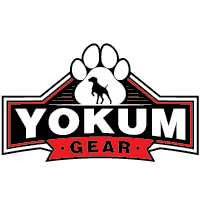As pet ownership continues to rise, more and more dog owners are turning to litter boxes as a convenient way to manage their pet's waste indoors. While traditionally associated with cats, litter boxes can be a practical solution for dogs as well, particularly for those living in apartments, those with limited outdoor access, or for elderly or disabled pets. However, selecting the right litter box for your dog can be a daunting task given the variety of options available. This guide aims to simplify the process by outlining key considerations and tips for choosing the perfect litter box for your canine companion.
Size Matters
The size of the litter box is a crucial factor to consider. Dogs come in a wide range of sizes from tiny Chihuahuas to large Great Danes, and the litter box must be appropriately sized to accommodate your dog comfortably. A litter box that is too small might cause your dog to feel cramped and result in accidents outside the box. Conversely, a box that is too large might be intimidating for smaller dogs. It’s important to measure your dog and compare those measurements to the dimensions of potential litter boxes to ensure a good fit.
Material and Durability
The material of the litter box plays a significant role in its durability and ease of cleaning. Plastic is a popular choice as it is generally lightweight, easy to clean, and durable. Some high-end litter boxes are made from more robust materials like heavy-duty plastic or even stainless steel, providing added durability. Consider your dog’s habits and level of activity when choosing the material; an energetic dog might require a sturdier, more robust litter box.
Accessibility and Design
Accessibility is another essential aspect, especially for older dogs or those with mobility issues. Look for a litter box with low entry points or ramps that allow your dog to enter and exit with ease. Additionally, the design should fit into your home's layout and your dog’s usage habits. There are open designs for dogs who prefer a clear view and covered models to provide more privacy. Some litter boxes also come with high side walls to prevent litter from being kicked out, which can be particularly useful for enthusiastic diggers.
Type of Litter
Different types of litter may be more suitable for dogs, depending on their preferences and any sensitivities they might have. Options include traditional clay litter, recycled paper pellets, and even specialized dog litter made from materials such as natural grass or wood. The type of litter can affect odor control, dust levels, and overall ease of cleaning. It’s often a good idea to start with a small amount of several different types of litter to see which one your dog prefers.
Odor Control
Odor control is a primary concern for any indoor litter box. Some litter boxes come with built-in features like carbon filters or antimicrobial coatings to help manage smells. The type of litter also plays a huge role in odor management; litters made from materials like activated charcoal or biodegradable compounds can often absorb and neutralize odors more effectively. Regular cleaning and maintenance are essential, regardless of the features offered by the litter box, to ensure your home stays fresh.
Ease of Cleaning
The litter box should be easy to clean to maintain hygiene and make your life simpler. Look for features such as removable liners, washable components, and smooth surfaces that are easy to wipe down. Some high-end models even offer self-cleaning mechanisms, though these tend to be more expensive. Always review the cleaning instructions provided by the manufacturer to understand what will be involved in maintaining the litter box.
Training Your Dog
Once you have chosen the right litter box, the next step is to train your dog to use it. Positive reinforcement techniques, such as rewards and praise, can be very effective. Consistency is key; make sure to take your dog to the litter box at regular intervals, particularly after meals. Patience and persistence will pay off, enabling your dog to become comfortable with their new indoor bathroom arrangement.
Conclusion
Choosing the right litter box for your dog involves considering a variety of factors including size, material, design, type of litter, odor control, ease of cleaning, and accessibility. By carefully evaluating your options and taking your dog’s specific needs into account, you can find a litter box that will help maintain a clean and comfortable environment for both you and your pet.

